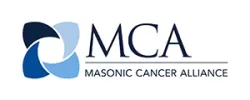Name: Donna
Position: Nurse Navigator
Subject: Nurse for Navigator
Question:
I work with patients with advanced prostate cancer. I was recruited by a large urology group to help develop an advanced prostate cancer clinic. I have since been promoted to Manager, Clinical Navigation. My concern is that our CEO, and a majority of the physicians, do not see the need to employ RNs as oncology navigators. The group mostly employs medical assistants. We plan to have pathways in the following: men’s health, bone health, bladder cancer, overactive bladder, prostate cancer (in addition to advanced prostate cancer). My CEO only hears in numbers, literally.
Answer:
Maybe he needs to hear numbers in the form of dollars that can happen when someone without the appropriate licensure is trying to provide services such as patient education, assist patients with decision-making options for their treatment, address psychosocial needs of the patients and their families, facilitate discussion about end-of-life planning, promote hospice referrals, etc.
There is certainly value in having a patient lay navigator who works WITH YOU to arrange for referrals, get precertifications over the phone, make follow-up calls to make sure the patient is NPO before surgery, and such. But a clinical discussion can cause a lawsuit if done by a lay patient navigator. You are there taking the workload off of the DOCTORS. Have the patient lay navigator take clerical tasks off of your plate.
Name: Heidi
Position: Nurse Navigator
Subject: Navigator-to-Patient Ratio
Question:
Is there a ratio to follow regarding how many patients an oncology nurse navigator should/can navigate and provide the best quality patient care? Is there a benchmark to use as a guide for this staffing ratio?
Answer:
If I had a quarter for every time I have been asked this question, I would be rich by now. It depends on the type of cancer the patient has, the stage, what other comorbidities they already have, socioeconomic status, financial needs, types of treatments anticipated, reliability of a good family caregiver, and other parameters. Think about it. It would be pretty easy to navigate 300 patients a year if nearly all had stage I or II breast cancer, lived in the suburbs, had health insurance, had family support, had solid finances to rely on, had a college education, and treatment went predictably fine. Now look at 300 patients with advanced pancreatic cancer. Nearly all are going to die. If they lack education, don’t have health insurance, do not have a good support system at home, can’t feel they can even take off from work for treatments or they won’t be able to pay their rent, have other comorbidities, have children who belong to gangs and are drug-dependent, then it is going to take many oncology nurse navigators to help these patients.
It will be critically important for everyone to be working efficiently. Rework is wasted time.
Each day, you need to look at what is on your plate and determine the best strategy for completing that work. Patient acuity won’t allow time for poor planning.
It is for this reason that AONN+ is working in partnership with Astellas to create an acuity system so that oncology navigators will be able to calculate what the navigation needs of each patient are going to be using a scale derived from specific criteria and parameters. By doing so, we will have a long-awaited answer to this question. Stay tuned for updates on this very important work we are doing for you and other AONN+ members.
Name: Vickie
Position: Nurse Navigator
Subject: The Value of the Patient Care Navigator Role to the Cancer Team
Question:
Hello, Lillie. Thank you for the opportunity to pose my question. I recently retired after being in the role of patient care navigator (PCN) for 17 years. My nursing career spanned 41.5 years. I was the first navigator at my institution when I was hired in 2002. The Medical Director of the Cancer Institute and Breast Center Manager at the time certainly had a vision. How do you explain or justify to the manager types who seem to have the opinion that the “real” oncology nursing role is clinical, and more hands-on, giving chemotherapy at the bedside or in the clinic? That those oncology nurses would not be satisfied or challenged enough in the PCN role. My nursing career, with its clinical and administrative positions, prepared me for my PCN role. I never experienced any cognitive dissonance or identity crisis. I was and will always be a proud nurse. The last 17 years was some of my best nursing, and my patients and co-workers attest to it. Never underestimate the PCN’s value!
Answer:
Sounds like you need to purchase my most recently published book, Oncology Nurse Navigation: Transitioning into the Field, that explains the difference between the roles of a clinical oncology nurse and an oncology nurse navigator. The book is about helping clinical oncology nurses transition into the wonderful role of an ONN.
What you are experiencing has happened elsewhere. Tunnel vision for sure. Clinical oncology nurses in large part have become technicians—giving chemotherapy IV infusions, managing all of the devices we hook patients up to today, and all of the tubes we have coming out of their bodies. Clinical oncology nurses see a cancer patient for a snapshot of time—in the infusion center for 1 hour every 3 weeks. They no longer have time to sit and get to know their patients beyond the drugs they are taking and the type of cancer they have. ONNs, on the other hand, are involved with the patient from diagnosis (even prediagnosis) across the entire continuum of care and into short- and long-term survivorship or end of life. They are not just removing barriers to care; they are delivering patient-centered care by getting to know this person and their family, and providing psychosocial support, patient education, and helping patients understand their treatment options so they can actively and more confidently participate in the decision-making about their care. They serve as the hub of the wheel for the multidisciplinary team. They are the patient’s advocate and serve as the patient’s voice in tumor boards and clinic meetings when the patient is not there to speak for themselves. I cannot count how many times in a multidisciplinary team setting, as the doctors are discussing their recommendations for the “next treatment,” I have been the voice of the patient to say, “Marie wants to stop treatment. She doesn’t want to hurt your feelings by telling you so. So I am telling you. She wants to start hospice at home. I have spoken with her daughter/family, who wants her to keep getting treatment because they can’t picture her gone. But that is a selfish way to think. She deserves several months of hospice care and time to get closure by having her get all 9 elements fulfilled that will ensure she experiences a good and peaceful death.” (Now can you imagine the infusion nurse saying this to the team? When would that happen? She doesn’t know the patient as personally as you do!)
And, congrats on your retirement!! L













